Sun groundcovers are great additions to the garden. But is shade groundcovers are used to cover and protect bare soil under trees and structures, wat are sun groundcovers used for? Well, they mainly are used to fill large spaces. Many of our gardens are in large lots, and filling it all with turfgrass seems wasteful. At least, it does to me.
Do not get me wrong, I love the look of turfgrass. I just do not like the idea behind it. To get the perfect stretch of green lawn, you have to mow weekly (or more), fertilize, and spray weeds often. I prefer a chemical free lawn or landscape, where the insects and my kids can play. So I use sun groundcovers to help fill space. In many spots of my actual lawn, sun groundcovers thrive where turfgrass does not. My landscape used to be depleted farm ground, now it is a living landscape. But the soil still has a long way to go.
Native Sun Groundcovers
There are plenty of perennial, and a few shrubby groundcovers which thrive in the sun. These plants often have more benefits for wildlife, from birds to bees, than do the shade groundcovers. Some of these groundcovers, like the sedums, work better in rock gardens. And others prefer room to roam. Again, more prefer to be part of the lawn.
Strawberry – Fragraria species
Yes, I like to use strawberries as groundcover. And why not? They are semi-evergreen, have flowers the bees love, and produce edible fruit. There are many ever-bearing strawberries which make great groundcovers when mixed into a large bed or the lawn itself. I planted ‘Lipstick’, a variety which has pink flowers as well as yummy fruit in the front of my flower bed. The strawberries send out runners and baby plants a couple times a year. And they have reddish fall color when they do go dormant.
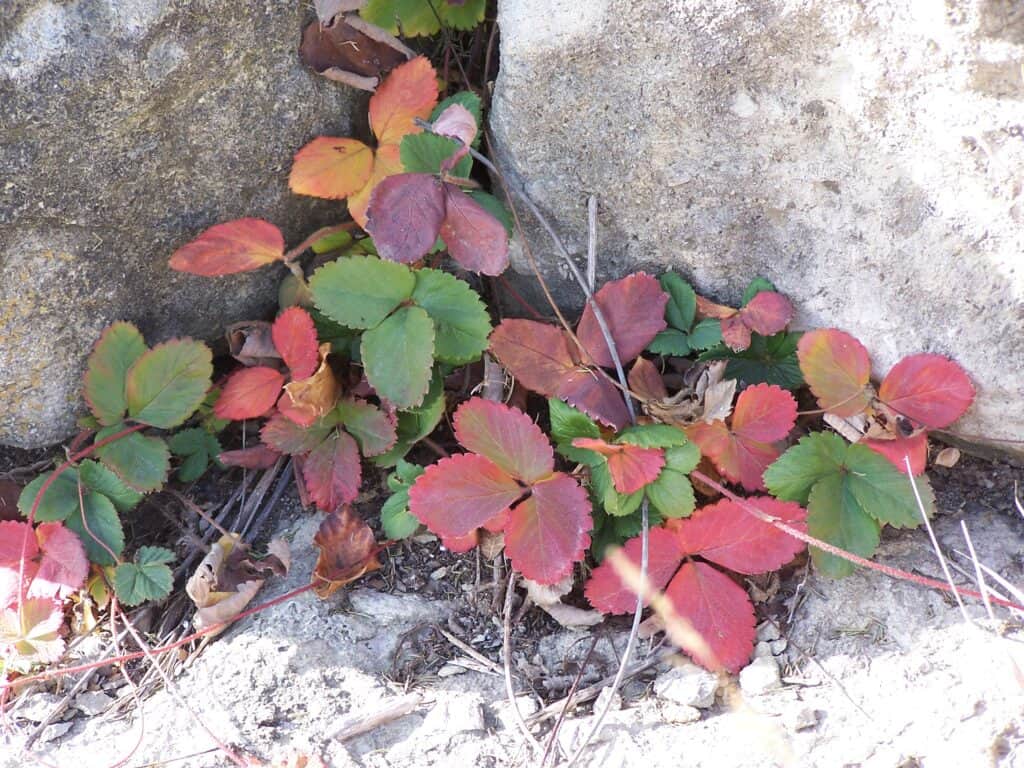
Pink Ladies – Oenothera speciosa
This is an old-fashioned groundcover. You can still find pink ladies growing wild in the Great Plains, but you can also find it at original landscapes of Victorian style homes. Pink ladies have small, narrow leaves and bright pink or white flowers which are slightly fragrant. The flowers bloom in summer and last for several weeks. Bees and butterflies attend to the flowers and the narrow seedpods turn reddish orange in fall. They grow 12 to 16 inches tall and spread quickly.
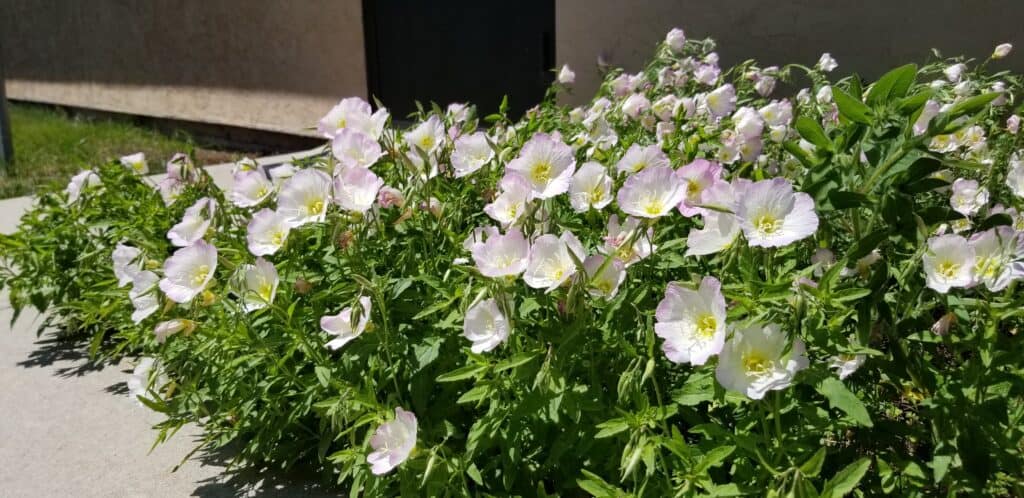
Rose Verbena – Glandularia canadensis
One of my favorite sun groundcovers, rose verbena is a blooming machine. Rose verbena is a native prairie plant which outdoes most other groundcovers by its long bloom time. I have seen plants consistently perform in the landscape by blooming steadily from June to September. It spreads out 4 to 6 feet from each crown and grows 3 to 6 inches tall. The blooms are bright pink, sometimes purple.
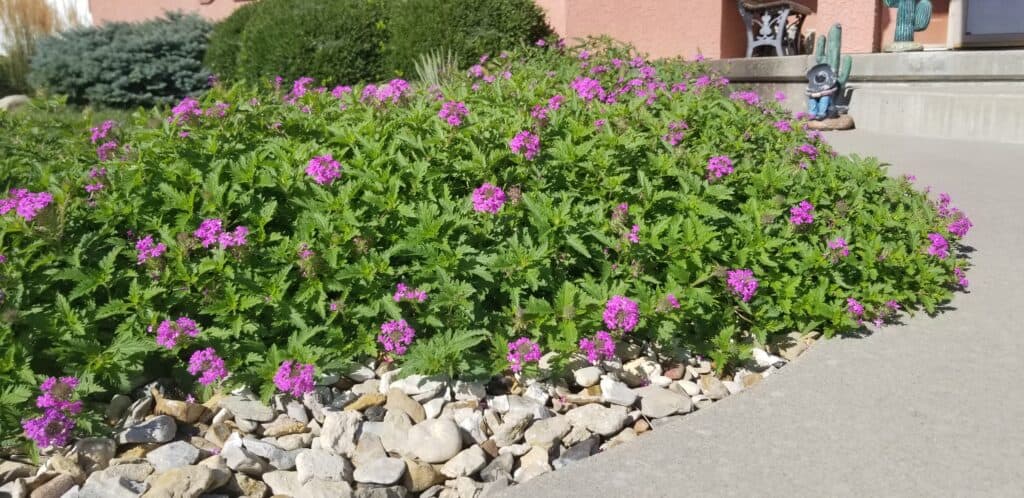
Creeping Phlox – Phlox subulata
Most gardeners do not know that creeping phlox is native. It is actually native to the northeastern US, in the Adirondack Mountains. Out here, it is a semi-evergreen, hardy and drought loving groundcover. Creeping phlox comes in a variety of colors including blue, lavender, pink, white, mauve, and almost red. The foliage is small, nd quite prickly when handling. It prefers to be in a dry location and left alone except for late fall pruning to keep it in shape, not cut back to the ground. This phlox grows 2 to 6 inches tall and can grow outward up to 3 feet.

Threadleaf Coreopsis – Coreopsis verticillata
Another plant that many do not know is native. Threadleaf coreopsis is a great sun loving groundcover which prefers full to part sun and dry to slightly moist soils. There are a couple of bloom colors including yellow, white, pink, and bicolored. ‘Zagreb’ is probably the best cultivar for Northeast Kansas, though there are several in the nursery trade. Plants grow 10 to 18 inches tall and spread through rhizomes over 4 feet.
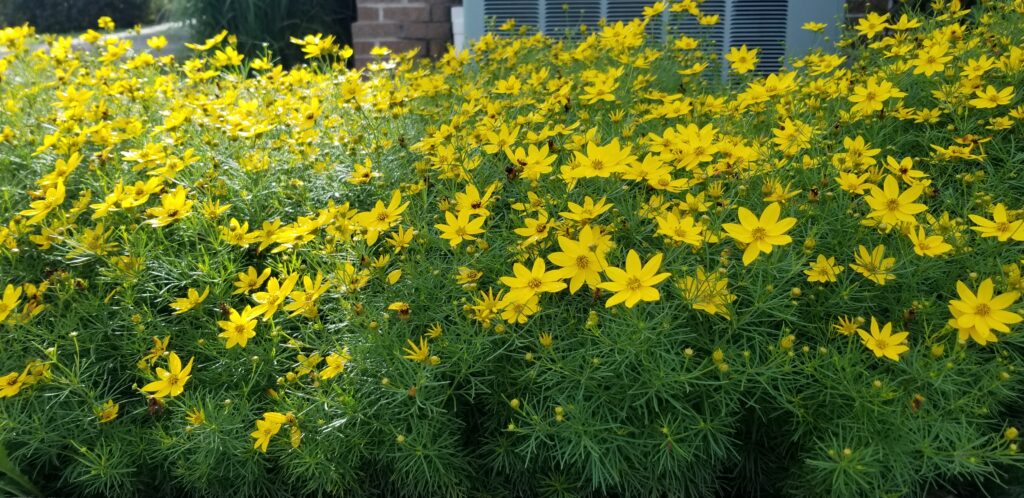
Ohio Spiderwort – Tradescantia ohiensis
This is a fast growing groundcover so be warned! It could take over if not planted where you really want it. While there are several other species of spiderwort in garden centers, Ohio is best used as a groundcover. It spreads quickly to fill up a 20 square foot area. Blossoms can be purple or lavender in color. And it looks like grass or sedge, making it possible to be used as a grass mimic on the edge of lawn or turf. It grows 6 to 18 inches tall and should be mowed off about 2 weeks after flowering, and then cleaned up in the fall.

Field Pussytoes – Antennaria neglecta
Another lawn loving sun groundcover, field pussytoes actually prefer to be in the lawn. But you can certainly try them on their own. They grow short, the plants top out at 3 inches, while the flower stalks rise up to 8 inches. The flowers are visited by bees and butterflies. And the American Lady butterfly uses them as one of its host plants. I had to lay on the ground among a field of pussytoes to find the caterpillars.

Whorled Milkweed – Asclepias verticillata
Here is a another of the more aggressive sun groundcovers. Whorled milkweed, if left to itself, will quickly fill an area with its rhizomes. It grows 1 to 3 feet tall and will grow in full sun to part shade. The flowers are white and it begins to bloom in July. Just like the other milkweeds, it is a host plant for monarch butterflies. And it is an important pollinator plant for a wide range of moths, butterflies, bees, and beetles.

Nonnative Sun Groundcovers
Just like with any nonnative plant, there is the potential for it to become invasive. Therefore, I caution you to use these wisely, and not plant them where they may become invasive. Some, like the groundcover sedums, you will not have to worry about invasiveness, but rather how long you can keep it alive.
Pinks – Dianthus species
The species of Pinks we are using as sun groundcovers are from the Mediterranean region, where the summers are dry. The groundcover dianthus grows 4 to 6 inches tall with green or gray-green leaves. Flowers can be white, yellow, pink, magenta, lavender, red, or bicolored. And they are very fragrant with a spicy aroma. Flowers are about an inch in diameter and they bloom in spring, sometimes reblooming, but rarely. They are slow growing, though they do spread from seed.

Blue Plumbago – Ceratostigma plumgabinoides
While this species is most commonly seen as a shade lover, it does very well in part sun, more like an edge plant than a true shade lover. It creeps slowly, about 12 inches a year across the landscape. The rhizomes of plumbago are thing and wiry. It blooms primarily in August and September with bright, sky-blue flowers. In autumn the leaves turn bright red, similar to sweetspire. Maintenance is simple, just cut it to the ground in late fall or winter.

Lamb’s Ear – Stachys byzantina
Native to Turkey and Iran, lamb’s ear is a sun or part shade groundcover. It grows 3 to 6 inches tall and spreads slowly over the ground by runners and seed. The leaves are very soft, and this plant often makes it into a children’s or touch garden. However, it does have tall flower stalks of purple or lavender flowers which are quite attractive to bees and butterflies.
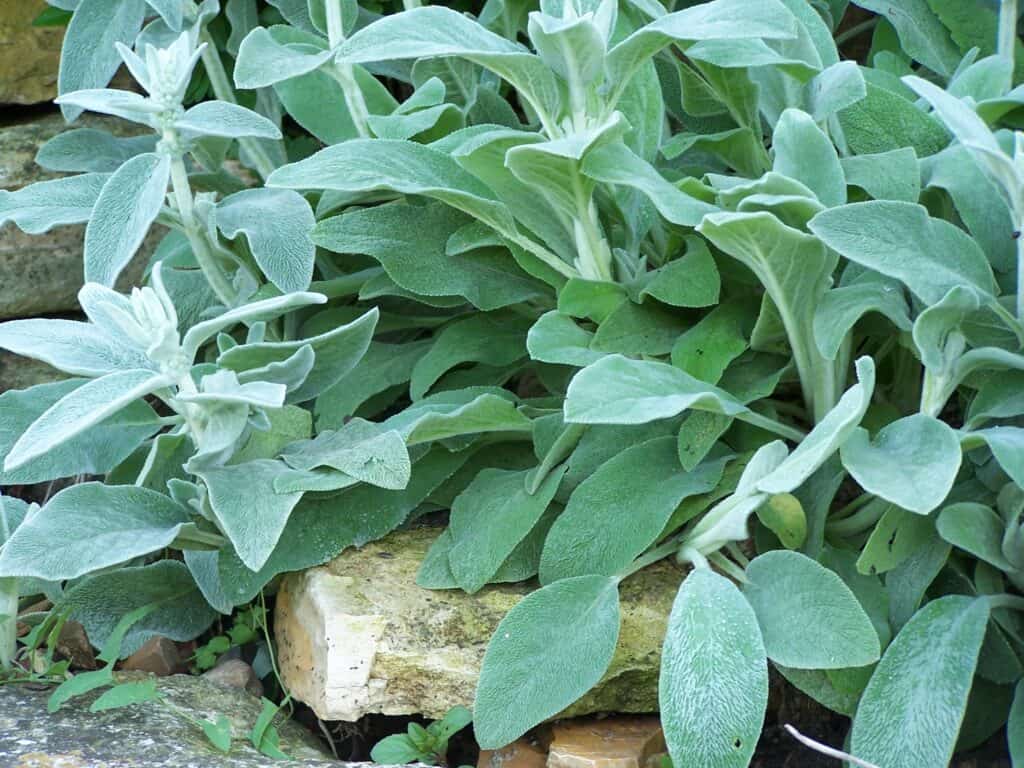
Sedum – Sedum species
There are a variety of different groundcover sedums which can be used in full sun. They also come in a variety of colors including green, red, and bronze. Flower colors are usually yellow, white, or pink. The leaves are succulent, meaning that they hold moisture better, and are very drought and het tolerant. They do not like to be walked on however, so the best use for them is in areas where rocks are.

Invasive Sun Groundcovers
I have just 2 plants on my list which I do not recommend anyone plant in their landscape. These groundcovers are invasive and will take over native plant ecosystems, choking out nature.
Crown Vetch – Securigera varia
While it is still sold throughout the US as a plant to hold up landscape cut-outs or ditch renovations, crown vetch is an invasive weed. It does make its own nitrogen with the help of bacteria, but it grows and spreads very quickly, overtaking streambanks, prairies, meadows, ditches, grasslands, and more. It is listed as a noxious or invasive weed in 12 states already.
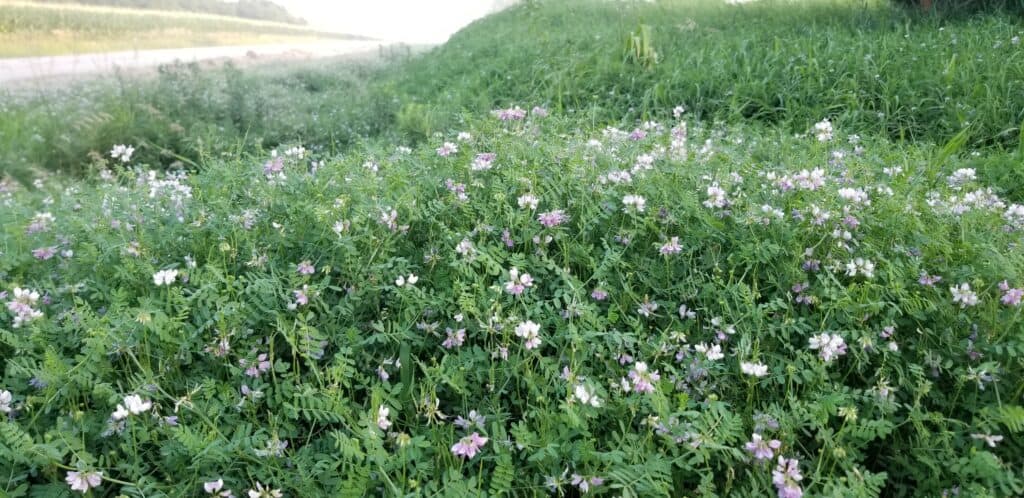
Creeping Potentilla Potentilla neumanniana
This is another aggressive growing groundcover. I tried it when I was young, and I have lived to regret it. Even a tiny piece of this plant will re-root and spread through its long runners and by seed. It quickly spreads into the lawn and surrounding landscape. It is very difficult to eradicate.

Conclusion
Sun groundcovers fit into a wide range of sunny gardening spots, from the lawn to the landscape. Add them in to fill spaces and provide pollinator benefits throughout your garden.
Happy planting!




